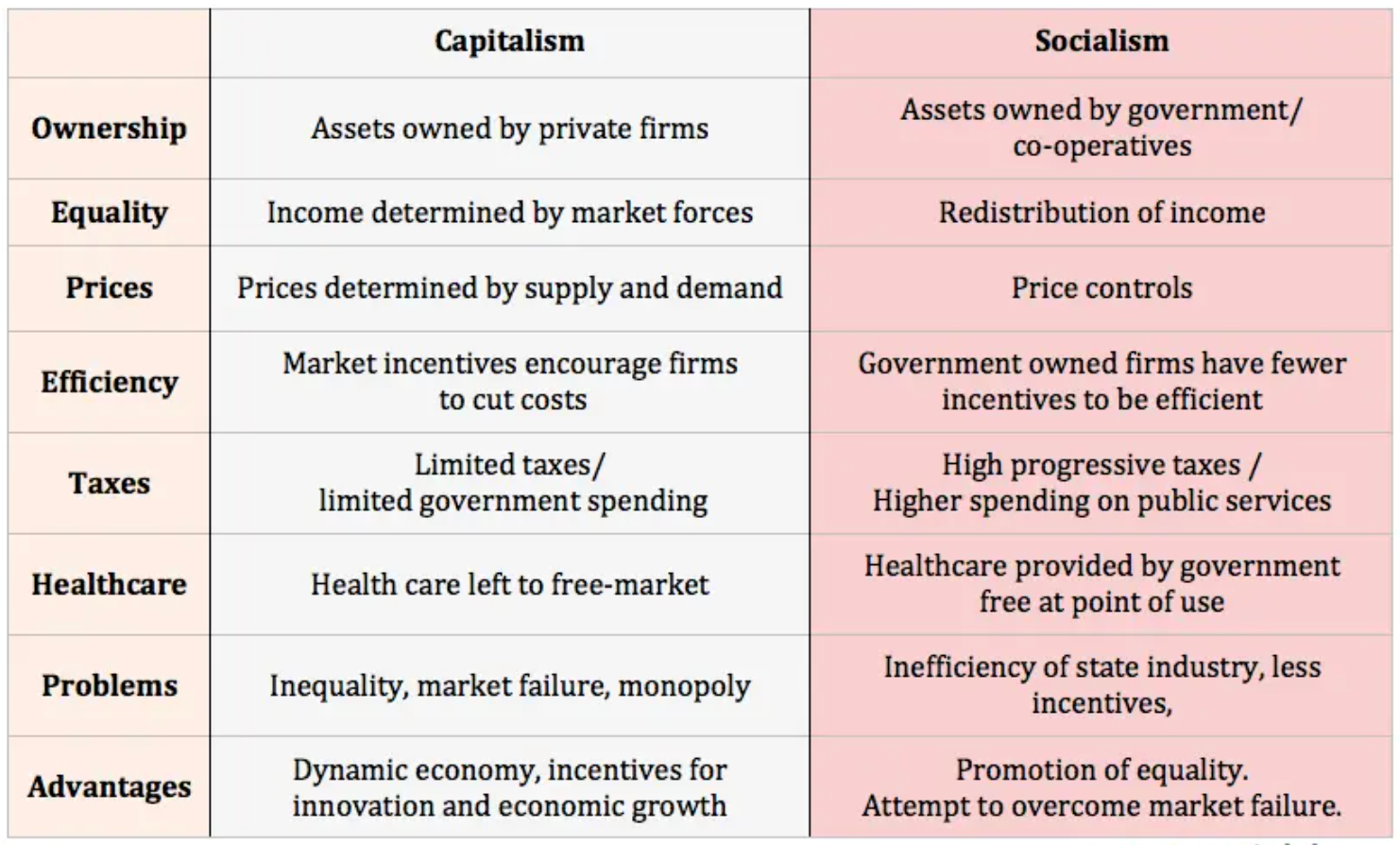
Capitalism Vs. Socialism
The biggest difference between capitalism and socialism is how much the government intervenes in the economy. Capitalist economic systems are characterized by private ownership of business and assets. They rely on free markets to determine prices, incomes, wealth, and the distribution of goods. Meanwhile, socialist economic systems are characterized by increased government intervention in order to reallocate resources in a more egalitarian manner.

Equality
- Capitalism is not concerned with equality. Instead, it argues that inequality is necessary to encourage economic development and innovation.
- Socialism is concerned with redistributing resources by taking from the rich and giving to the poor. It aims to provide equal opportunities, and in some forms of socialism, equal outcomes as well.
Ownership
- In capitalism, private businesses are own by private companies and individuals.
- In socialism, the state owns and controls the main means of production. Some models of socialism have worker cooperatives owning the main means of production, rather than the government.
Efficiency
- Capitalism argues that the profit incentive encourages firms to cut costs, increase efficiency, and innovate new products that people want. Firms that fail to keep up will go out of business. This business failure causes resources to flow to the newer, more efficient areas of the economy, a concept referred to as “creative destruction.”
- Socialism argues that state ownership leads to inefficiency since managers and workers don’t have any real incentive to cut their costs. A joke often made about Soviet Communism was, “They pretend to pay us; we pretend to work.”
Unemployment
- In a capitalist economic system, the state does not provide jobs directly. Because of this, in times of recession, unemployment rates in this type of system can rise to extremely high levels, like during the Great Depression when they were above 20%.
- In a socialist economic system, the state often directs employment. Due to this control, the state can provide full employment, even if workers aren’t doing anything essential. Sometimes, socialism is associated with Keynesian demand-management, which refers to attempts to stimulate the economy when it is in a slump. However, Keynes was not a socialist himself.
Price Controls
- Under capitalism, market forces determine prices. Firms that have monopoly power can exploit their positions and charge much higher prices.
- Under a socialist state-managed economy, the government usually sets the prices, which can lead to shortages and surpluses.
Evaluation
Socialism comes in many different forms, from democratic socialist parties in Western Europe to totalitarian communist regimes. The democratic socialist parties pursue a more pragmatic form of redistribution, whose goal is opportunity equality rather than outcome equality.
Pragmatic Socialism
As mentioned above, some forms of socialism take a more pragmatic approach. They leave many industries in private hands, recognizing that free markets are more efficient in producing goods. However, this type of socialist society does use social spending and progressive taxation to provide a minimum safety net. The government runs important public services as well.
Responsible Capitalism
In many “advanced capitalist societies,” there is considerable government intervention in which the government provides unemployment benefits as well as public spending on education, healthcare, and infrastructure.

